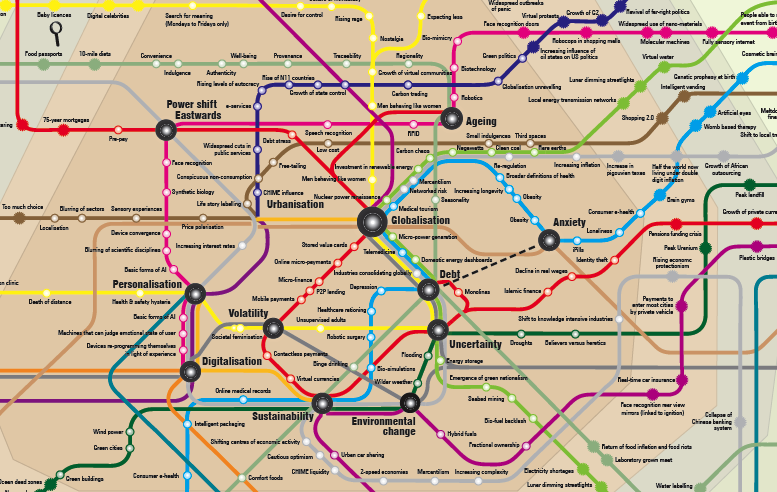Phones as thin as paper. Flexible displays that stretch and bend to turn a smartphone into a tablet. Microsensors that report to your environment: the humor of the owner, weather, location ... so will the phones in 2020. At the Mobile World Congress has spoken of the future. A group of technologists have analyzed the ways in which could run the mobile industry over the next decade.
And something does have coincided: the cellular devices will be simple to be friends for company. "They will know our location, our mood and our productivity needs. There will be equipment, will be friends of pocket," said John Donovan, CTO of the American operator AT & T, adding: "The Network is like oxygen, go with us everywhere.
" To prove taught an "intelligent shoe", equipped with sensors, connected to the network and designed to control the location of the elderly or automatically send your vital signs to a hospital. "Since we control all these mobile devices." Donovan predicted the demise of current model applications, because "reside in the cloud," he said, and opted for the emergence of devices in which current hardware boundaries disappear.
"We'll see TVs that can be telephones, mobile personal recorders will be TVs or PCs." Ulrich Kristian Larsen, interaction designer for 25 years, tried to realize these ideas showing a concept dubbed flip mobile phone. "All smart phones seem now too. With the flip phone we want to change that." The idea: a three-screen cell flexible, foldable and convertible into a minitableta with a pair of movement, ideal for multitasking, surf the Internet and reading books.
For now it is just a concept, but Larsen believes that something similar will be imposed in a few years. The futuristic vision of contributed Rich Green, global technology leader Nokia. Of course, the looks of skepticism floating in the air. In collaboration with the University of Cambridge, Nokia investigates how to apply nanotechnology to mobile phones to incorporate sensors that make them more intelligent or flexible displays designed to turn them into clocks and tablets.
The project, called Morph, has two years old. "The convergence of nanotechnology and cellular biology achieved, for example, a mobile change color and appearance in a single click. Sony Ericsson is one of the manufacturers who believe in the convergence of devices. "A proof is our latest innovation, the Xperia Play, a mixture of PSP phone," said Jan Uddenfeldt, global technology company.
The most provocative intervention was the co-founder of The Astonishing Tribe (TAT), design and technology studio responsible for some of the development of Android. Hampus Jakobsson questioned the evolution of the mobile industry from an anthropological point of view. "Every time we spend more time hanging on a screen.
We sent a tweet or SMS instead of talking face to face. Is it really what we want?" He asked. And he closed with his response: "We have to design phones and services that make us spend more time with us, and less with machines." 


And something does have coincided: the cellular devices will be simple to be friends for company. "They will know our location, our mood and our productivity needs. There will be equipment, will be friends of pocket," said John Donovan, CTO of the American operator AT & T, adding: "The Network is like oxygen, go with us everywhere.
" To prove taught an "intelligent shoe", equipped with sensors, connected to the network and designed to control the location of the elderly or automatically send your vital signs to a hospital. "Since we control all these mobile devices." Donovan predicted the demise of current model applications, because "reside in the cloud," he said, and opted for the emergence of devices in which current hardware boundaries disappear.
"We'll see TVs that can be telephones, mobile personal recorders will be TVs or PCs." Ulrich Kristian Larsen, interaction designer for 25 years, tried to realize these ideas showing a concept dubbed flip mobile phone. "All smart phones seem now too. With the flip phone we want to change that." The idea: a three-screen cell flexible, foldable and convertible into a minitableta with a pair of movement, ideal for multitasking, surf the Internet and reading books.
For now it is just a concept, but Larsen believes that something similar will be imposed in a few years. The futuristic vision of contributed Rich Green, global technology leader Nokia. Of course, the looks of skepticism floating in the air. In collaboration with the University of Cambridge, Nokia investigates how to apply nanotechnology to mobile phones to incorporate sensors that make them more intelligent or flexible displays designed to turn them into clocks and tablets.
The project, called Morph, has two years old. "The convergence of nanotechnology and cellular biology achieved, for example, a mobile change color and appearance in a single click. Sony Ericsson is one of the manufacturers who believe in the convergence of devices. "A proof is our latest innovation, the Xperia Play, a mixture of PSP phone," said Jan Uddenfeldt, global technology company.
The most provocative intervention was the co-founder of The Astonishing Tribe (TAT), design and technology studio responsible for some of the development of Android. Hampus Jakobsson questioned the evolution of the mobile industry from an anthropological point of view. "Every time we spend more time hanging on a screen.
We sent a tweet or SMS instead of talking face to face. Is it really what we want?" He asked. And he closed with his response: "We have to design phones and services that make us spend more time with us, and less with machines."



- Mujeres Inteligentes 4 Group : Dominican Republic (10/12/2010)
- Lesson Plan: Comparatives Part 4: The Absolute Superlative (07/11/2010)
- Favorite Cartoon of the Week: TSA Scanning the Statue of Liberty (05/12/2010)
- Delta TechOps, GOL Establish Long-term Maintenance Partnership (04/02/2011)
- ACS Makes Progress on Hochtief (21/01/2011)
No comments:
Post a Comment